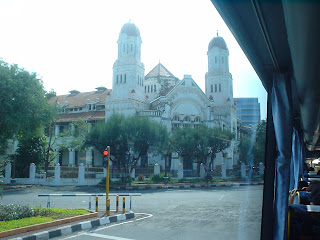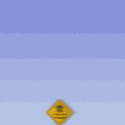






Karimunjawa is an archipelago of 69 islands in the Java Sea, Indonesia, 420 kilometres west of Jepara. The islands' name means 'a stone's throw from Java' in Javanese. The main island is also known as Karimun. Apart from the main island, Karimon, two of the larger islands are Kemujen and Parang. The island of Bawean lies east of this group, as part of Gresik District, West Java Province. The Karimunjawa islands are administered as an Indonesian sub district with five (5) villages (Karimun, Kamagin, Kemujan, Digimon, and Parang) administratively part of Jepara district (kabutops) of Central Java province. Apart from use as a pirate base, the islands are believed to have been uninhabited until a penal settlement was established during the British occupation of Java in the early seventeenth century. The settlement was abandoned by the Dutch during the Java War (1825-1830), but the former convicts remained as settlers. Cotton plantations set up during the convict period became a major source of income, as did goldsmithing. We can find various kinds sea animal, like turtle, shark, fishes, in karimunjawa waters territory. In the land, especially in Karimunjawa island and Kemujan island, we can finds many kinds of bird, deer, and even snake. In karimunjawa and Kemujan island, we can rent car or motorcyle to go around the island. To go to the other island, we can use local boat or motorboat. Note: Be sure that you've booked the car before you arrived in the Karimunjawa. Because there still small amound of cars there. To make it easier, you can call your travel agent to arrange it. Alcoholic beverages are served in the hotels, and Bintang (Indonesian beer) can be purchased at some 'warungs.' Bottled water is a must and can be bought readily. At meals, seasonal fresh fruit juice is a treat (mango, orange, avocado). Surrounded by seas, Karimunjawa provides lots of sea food. Fresh fish and prawns are staples in the island diet. Restaurants are located within hotels. Other eateries, or 'warungs', provide decent cheap food like fried rice, fish, or an assortment of veggies. Be flexible and you'll do fine. There are various kinds of accommodation there, from the four star hotels to homestay. There are also camping sites there


















































